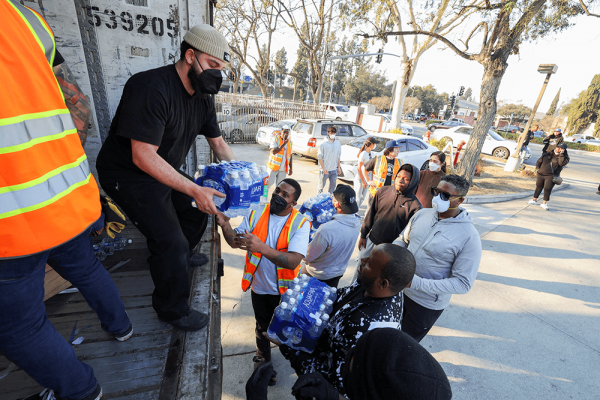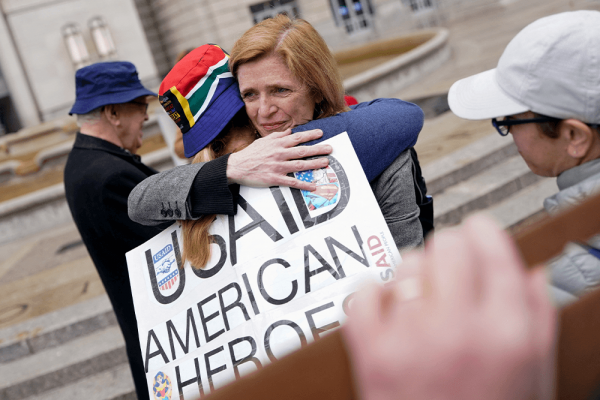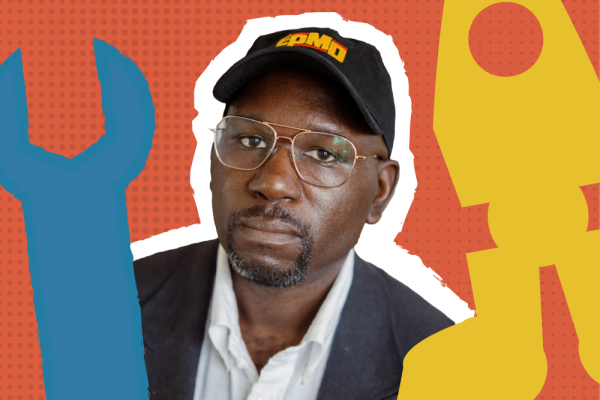In the Philippines, it is common to refer to the country as “Inang Bayan” or “Mother Land,” as this land we call home is lush and inviting. I was there when our Mother wept. In 2013, Super Typhoon Haiyan ravaged the lands of the Philippines, taking at least 6,300 human lives in its wake while 1,800 others remained missing. Costing an estimated 5.8 billion dollars worth of damages, Haiyan became one of the deadliest and costliest typhoons to hit the Philippines.
I saw their faces. I felt their tears on my fingertips. I watched their homes crumble, laid to waste as tribes and families were displaced by the typhoon. Traditional crowns are important to the Badjao community, but these cultural artifacts were ruined as a result of Haiyan along with their royal garbs and beautiful necklaces. All that was left were fallen trees, animal carcasses, ruined homes, and damaged places of worship.
The Badjao people rebuilt their homes and communities with their bare hands; they were decimated yet again almost a decade later by another deadly storm: Super Typhoon Rai. On Dec. 16, Rai made landfall at 1:30 p.m., local time. Rai became a powerful Category 5 typhoon that rivaled the deadliness of Haiyan. Rai took 405 lives with it, left 82 people missing, and displaced more than 129,000 Indigenous Filipinos.
It has become common for typhoons to coincide with Christmas fiesta each year. Filipinos are tired, weeping, and dying as a result of these typhoons; many are now looking for the root cause of these disasters and for ways to mitigate the damage in the future.
According to human rights and climate activist Xoài Pham, there is a straight line from U.S. imperialism to these typhoons and climate disasters which can displace Filipinos and other Indigenous peoples. After World War II, the U.S. sought to expand its political presence and influence by establishing over 700 military bases in 80 countries. The Philippines was one of those countries and the effect of the United States’ colonialist mentality is still evident today.
The U.S. Navy establishment in Subic Bay, Philippines, has perpetuated a class hierarchy by displacing Indigenous Filipinos, pushing them to the margins of Subic. Meanwhile, the U.S. military expands its presence and terraforms Indigenous land into property for military bases. Sociologist Victoria Reyes’ has recorded this phenomenon in her book Global Borderlands, noting that Indigenous people grieve the loss of their lands: “Where foreign troops go, lives are lost, women are abused, and our sovereignty is raped.”
Indigenous people suffer wherever the U.S. establishes its empire. Not only are Indigenous people displaced, but the long history of U.S. militarism has led to the contemporary climate crisis, which has directly impacted the Philippines.
For example, researchers from Durham University and Lancaster University conducted a study in 2019 which discovered that the U.S. military continues to be one of the “largest climate polluters in history,” as it dumps millions of gallons of toxic waste into the Filipino ecosystem, harming the natural ecology of Indigenous life in the Philippines. The U.S. military also emits a confounding 59 million tons of carbon dioxide, replacing the atmosphere’s oxygen with noxious gasses and making the natural air unbreathable. Over time, this toxic waste and gas impact the environment negatively, resulting in an increase in climate disasters worldwide, displacing Filipinos and other Indigenous peoples from their homes.
Situations like these expose the logic of U.S. imperialism. According to ecologist Norman Wirzba, even as early as the Atlantic slave trade, climate disaster and ravaged communities were simply a matter of “war capitalism,” as Europeans imagined the Indigene as a mere commodity — collateral damage — to fuel the pursuit of imperial expansion and world domination. This “war capitalism” mentality continues to manifest itself in the United States military efforts today.
Research shows that there is a direct connection between climate disasters and U.S. military pollution. In the Philippines, the ground and the skies lament while the people cry out in agony.
Issa Barte, a Filipina journalist, photographed and quoted a Bicolana mother who wept and said, “If another typhoon comes — that’s what we’re really dreading, what we’re scared of. We said, what will happen if our houses are destroyed again?” In another photo, Barte quotes a Filipina mother: “I could never forget it. Everything was lost. All our animals, all our livelihoods, it was all taken away. In God’s pity, in my children’s help, we got to recover little by little, even if our home isn’t whole.”
Due to climate change, people — entire tribes and cultures — are losing their homes and are being displaced from their lands. Indeed, the United States military needs to be held accountable for polluting the planet. For example, if preventive measures and legislation like the Green New Deal are not enacted to curb U.S. imperialism, more Indigenous peoples will perish due to climate disasters.
The climate crisis that we are facing in the present moment is not an isolated event, but a worldwide phenomenon. Ultimately, only powerful nations like the United States benefit from the exploitation of Indigenous lands and peoples.
The blood of Indigenous Filipinos — like the Badjao, the Calanguya, Bicolanos, and my people the Kagay-anons — cry out in accusation against U.S. imperialism. While the U.S. military continues its lust for resources, Filipinos are silenced and displaced from their lands and homes.
It all begins with our homes — with land and place as the designators of Indigenous identity. Despite the U.S. occupation and its climate atrocities, Indigenous Filipinos continue to rebuild their homes while struggling to reclaim their lands. Activist groups like the Philippine Task Force for Indigenous Peoples’ Rights declare that the lands upon which U.S. troops walk and establish their military bases belong to Indigenous Filipinos. Moreover, survivors of the environmental crisis in Subic Bay have organized into the Alliance for Bases Clean Up, an international movement demanding courts like the U.N. Commission on Human Rights hold the U.S. military accountable for the climate atrocities committed in Subic.
Indigenous groups who survived the typhoons, like the Calanguya of the Caraballo Mountains, return to their forests. They return to their former homes and forests to recover and restore them after they were destroyed by climate disasters. Today, they are leading a new movement to inspire other displaced peoples to follow their lead and fight for their lands against any and every form of oppression.
We need to listen to their voices, we need to be humbled by their struggle to pursue beauty and fight for the abundant life of our Inang Bayan — for creation and all who inhabit it. Indigenous peoples have much wisdom to share with us about what it means to rebuild and reconcile, what it means to follow the path of liberation; this is a liberation that dismantles empires and exalts those who are lowly and oppressed, the little ones among us whose hunger and thirst ought to never be neglected nor silenced.
Got something to say about what you're reading? We value your feedback!







